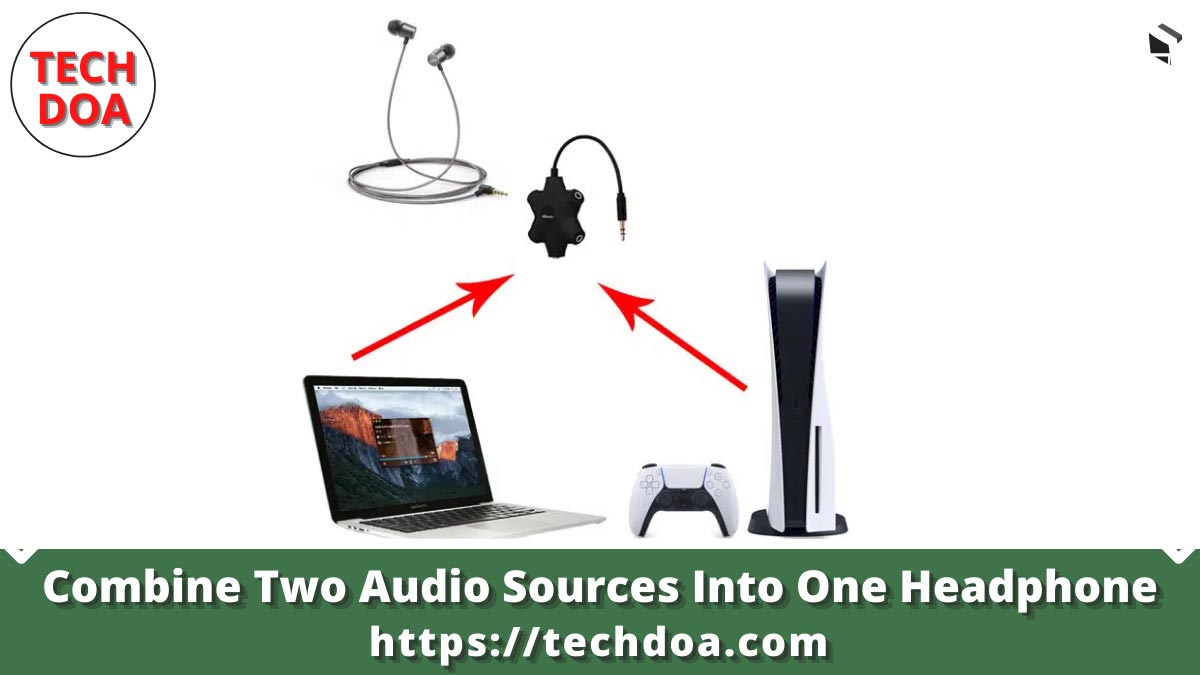Hello, music enthusiasts! I hope you’re doing great. If you’re looking to combine two audio sources into one headphone, you’re in the right place. Headphones really bring out the true essence of music, especially when they’re top-notch wireless ones.
If you’re after that extra volume boost in your headphones, you might just need a few gadgets to make it happen. Before we dive into the process, make sure you have portable devices like mp3 players, laptops, computers, or other portable players with both male and female ports. Now, let’s jump into the main topic.
Which Devices Can Combine Two Audio Sources Into One Headphone?
You’re in the right place! I’ve scoured the web for various options, and after some analysis, I’ve uncovered the most popular ones that many users recommend. Let’s dive in!
1. Rolls Mixer
Looking to combine sounds into one headphone? Easy! Use a simple mixer. Just connect two devices to one headset with this audio mixer. Imagine playing your instruments with headphones and having cool background music at the same time. Well, you can do it by connecting your phone and digital music player.
The Micro Mixer is your buddy for this. It’s not just about mixing – it helps with designing, collaborating on sounds, and adjusting signals. Grab one, and you won’t regret it. Get ready to make the most of your audio experience!
Pros:
- Excellent quality and compact design
- Powered mixer that meets everyone’s needs
- Ideal for podcasts
- Great for multiple inputs with studio monitors
- Small, sturdy, and easy to use
- A phenomenal beast!
Cons:
- Minor humming issue
2. Y Splitter Mini Stereo (2 to 1)
It’s a simple adapter that lets you connect a standard cell phone mic-earbud headset to separate audio-in and out jacks using just one port. While combining two audio signals isn’t usually recommended, if you’re skilled with electronics, you can give it a shot – but be cautious. Add a 10 to 30-ohm resistor in series with the other four signals and connect the outputs in pairs. This may result in a lower volume level, so proceed with care.
Pros:
- Unique, long, and flexible design.
- Reliable strain relief at connector molds.
- Solid and well-built construction.
Cons:
- Subpar sound quality.
3. External USB Stereo Sound Adapter
Here’s a simple way to mix audio sources using an electrical adapter. If you’re aiming for professional or academic use, consider an audio mixer with two sound cards, an external audio interface, or a dedicated power combiner. For a budget-friendly choice, go with an external audio interface, assuming your computer has an audio-in jack.
If not, you’ll need two of these interfaces and two ⅛” stereo TRS cables. Once you have the adapter, use free sound mixer software to combine the two audio sources and listen through your headphones. Easy as that!
Pros:
- Affordable low-budget adapter.
- Easy plug-and-play functionality.
- Compact and space-saving design.
Cons:
- Not very durable.
4. Multiple-input Headphones
Here’s a nifty little device that can handle two audio sources at once, sending them to your headphones. With multiple 3.5mm audio ports for headphone connections, it’s simple to use. Just attach the other two-port, connect the main port to your device, and you’re good to go. It’s compact, durable, and super affordable.
This 3.5mm headphone adapter allows you to connect both 5W headphones and speakers simultaneously. Compatible with all MP3 players and portable devices, it even comes with a standard controller for adjusting mixing and fade-ins for each device. Easy peasy!
Pros:
- Budget-friendly price.
- Straightforward pass-through device.
- All-in-one 5-way splitter in a compact gadget.
- Small and easy to handle.
Cons:
- Not the most durable option.
5. Dual Headphone Jack
I really dig this cool gadget – it’s got a sleek look that appeals to me. With two built-in 3.5mm ports that combine into a single output, it’s pretty handy. It comes with features like split audio systems, great for music or movies, superb sound quality, a stylish and compact design, and universal compatibility.
For split audio, you can enjoy listening from one portable device through two stereo speakers or headphones using a 3.5mm male to 3.5mm female audio splitter.
Just a heads up: it doesn’t have a microphone facility.
Pros:
- Top-notch sound splitting capabilities.
- Ideal for devices with cases.
- Sleek and stylish.
Cons:
- The wire is quite thin.
6. Audio Mixer 2 Input 1 Output
Check out this audio mixer! It’s got two input connections and one output – a handy bi-directional switcher for 3.5mm audio ports. Setting it up is a breeze, and you won’t need a guide. It’s designed with plug-and-play technology, so no extra power supply or software is needed. Easy peasy!
Pros:
- RCA A/B switch is quite impressive.
- Perfect for connecting two PCs to a set of speakers.
- Very cost-effective and useful.
- Easy to use, a good-quality device.
Cons:
- Not extremely reliable.
7. 2 Optical Inputs into 1
Introducing the digital 1 in 2 out optical fiber splitter! With this gadget, you can link one optical audio source to two audio signals using a Fiber splitter. It’s as simple as having one male input connecting to two female outputs simultaneously.
Keep in mind that for two female outputs to one male output, you need to turn off one female input device because having both on at the same time might result in annoying noise. The ZEXMTE Digital Optical Fiber is perfect for connecting digital audio sources to a recorder, receiver, or DVD/CD player.
And if you want to enjoy audio from two devices with just one pair of headphones, this is the way to go!
Pros:
- Flawless dual output functionality.
- Simply plug, split, and play.
- Hassle-free splitter.
- Compatible with TV Ears and Soundbar.
- Affordable and good quality.
Cons:
- Occasional loose connections.
Frequently Asked Question
Can you connect two audio sources to headphones?
Absolutely! Connecting two audio sources to headphones is doable. Using a mixer is a great option, and there are also adapters, switchers, and splitters that can get the job done. If you’re not too concerned about audio quality, lightweight adapters, switchers, or splitters can be convenient solutions.
Can you split audio between headphones and speakers?
Certainly! On Windows 10, you can split audio to enjoy music through both headphones and speakers simultaneously. This is perfect for sharing the audio experience with friends and family. Some settings adjustments may be required, but there’s no need for additional installations.
How do I combine audio inputs in Windows?
Simple! Navigate to sound>Playback, set the primary device as default. Move on to the Recording tab, locate the Stereo Mix device. In properties>Listen, check the “listen to this device” box, then select “Playback through the device” to your output device.
Can you combine audio inputs?
Yes, combining audio inputs is possible.
Conclusion
Achieving the joy of combining two audio sources into one headphone is a real win. Follow a few straightforward steps, and you may find helpful guidance in product manuals. Give it a proper check, follow the instructions, and hopefully, you’ll enjoy better feedback.

Founder, CEO and author of Techdoa.com. With a great experience after using multiple printers, I review best printers with proper guideline. I hope my provided information will inspire you to choose the best printer for your personal or professional work.






